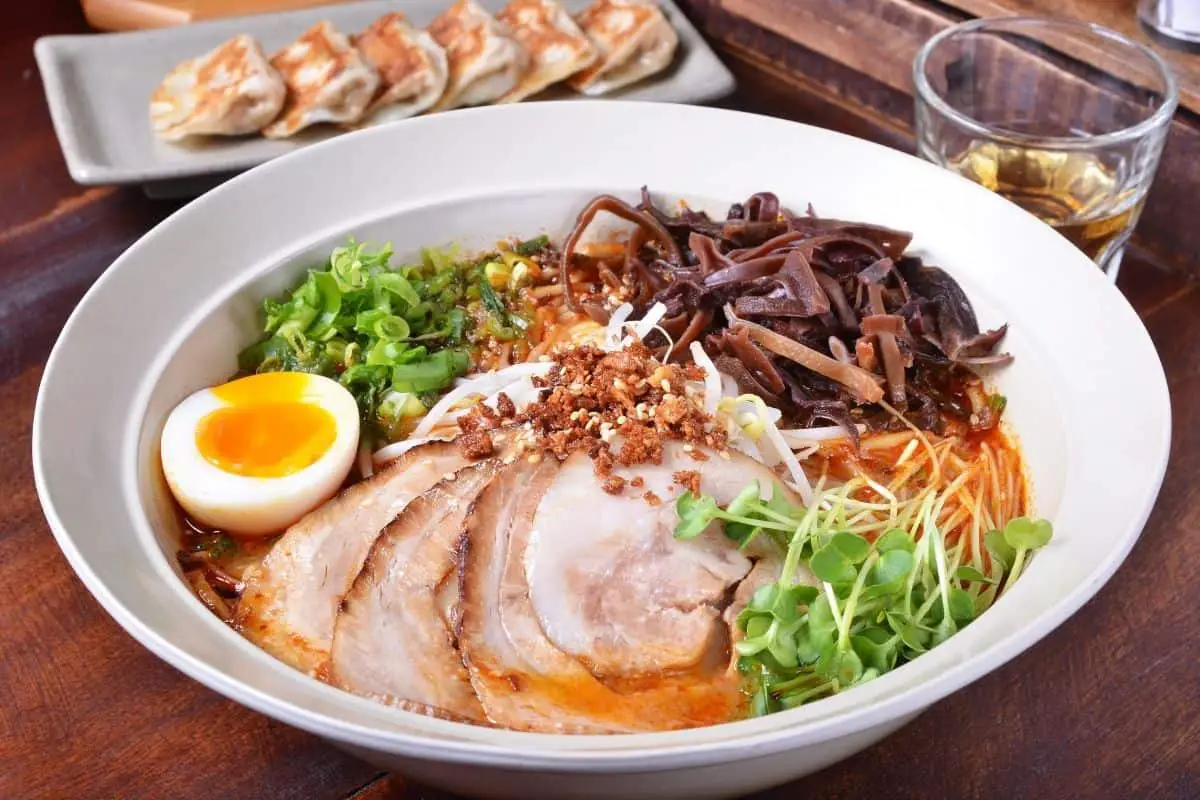In the states, ramen brings back memories of college dorms with microwaves and small fridges and boxes filled with instant ramen and other survival-type food items, the fare of broke college students.
I have to admit I have eaten my fair share of dehydrated noodles with those tiny flavor packets. In Japan, ramen is a whole other concept.
Where it all began
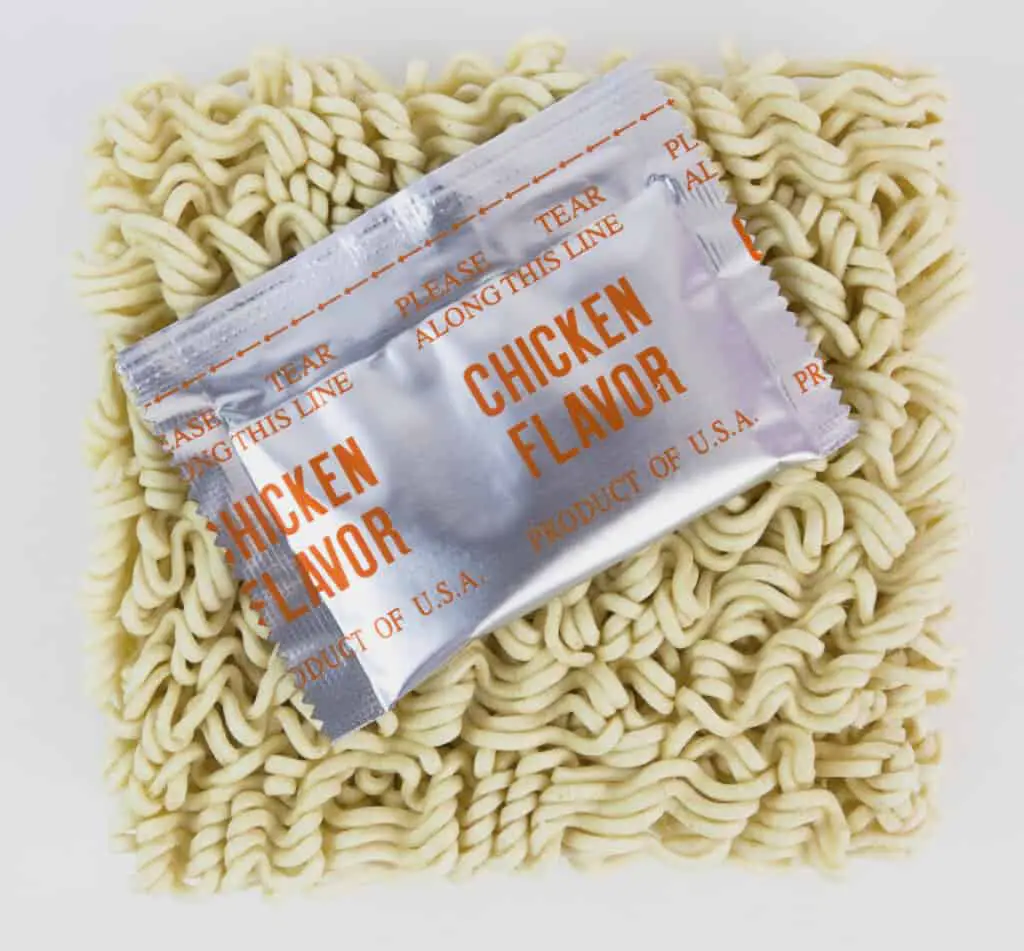
I suppose comparing instant ramen to a hand-crafted bowl of goodness is like comparing frozen pizza pockets to an Italian pizzerias finest creation. The question is still where and how did Japan become so obsessed with Ramen?
The Japanese term ramen is a transliteration of the Chinese word lamian. In Asakusa, Tokyo, the first ramen shop, Rairaiken established itself near the beginning of the 20th century, the shop employing Cantonese chefs from Yokohama’s Chinatown to prepare the ramen for local customers.
Shina soba (meaning “Chinese soba”) was the name given to ramen until the 1950s.
Even before the first Ramen shop opened in Asakusa, Chinese immigrants started a trend that still continues to this day.
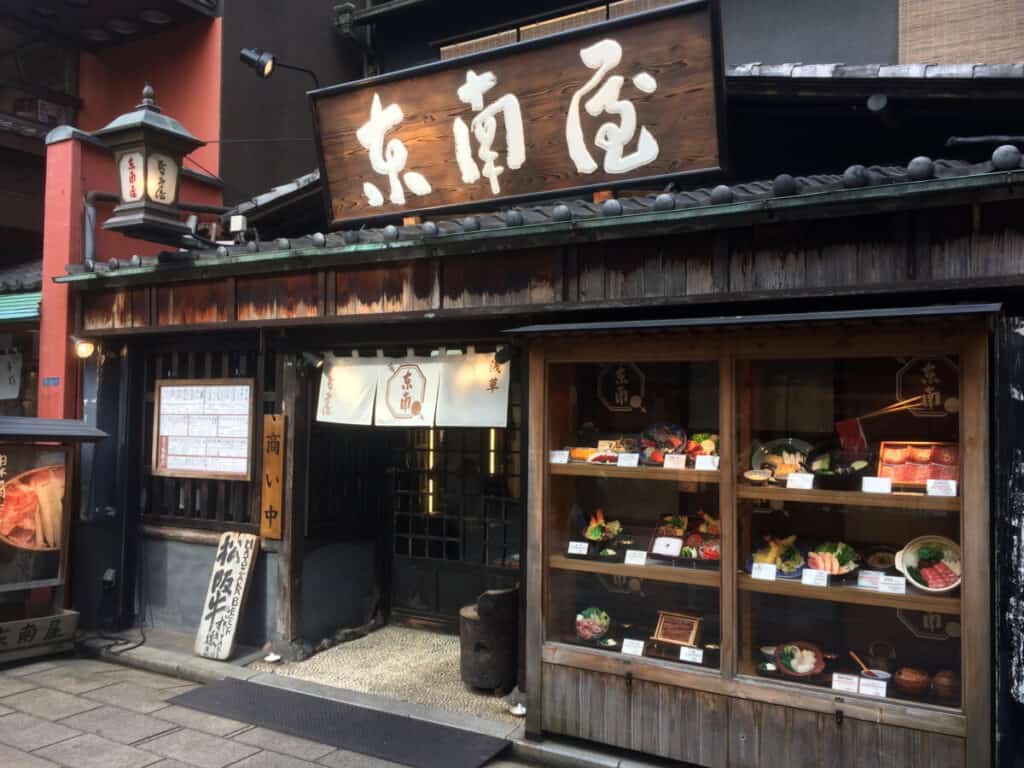
Chinese influence
When was the first ramen experience you could have in Tokyo? Immigrant food vendors set up shop at the beginning of the 20th century.
Many Chinese residents in Tokyo, set up mobile food carts to offer ramen to workers. By the mid-nineteenth century, these early food trucks were using a sort of melodic horn to announce their location, a technique that some vendors still perform today using a speaker and a recorded melody.
Ramen had been a popular dish to order when dining out during the early Showa era.
Americas forgotten influence In Japanese Ramen Culture
Following Japan’s surrender in 1945, the country was occupied by US troops. Japan saw its weakest rice harvest in 42 years in December 1945, resulting in food shortages.
To overcome food shortages, the United States supplied the Japanese market with massive amounts of inexpensive wheat flour.
As a result, ramen and bread consumption skyrocketed. Thus, rice consumption temporarily decreased as flour-based foods found popularity among the citizens of Japan.
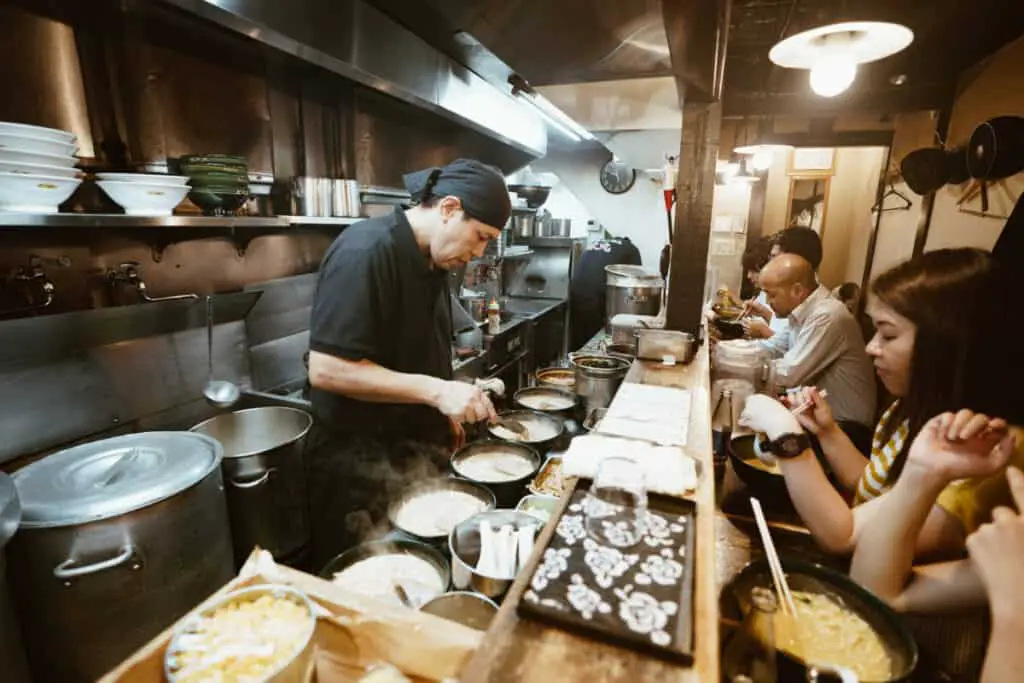
Ramen in modern day Japan
Ramen became a Japanese cultural symbol in the 1980s and was recognized all over the world. Simultaneously, regional ramen dishes began to appear throughout Japan and could be found on local menus by their regional name. In 1994, a ramen museum debuted in Yokohama.
Today, ramen is one of the most beloved cuisines in Japan, with about 5,000 ramen shops in Tokyo alone, and over 24,000 ramen restaurants throughout the country.
In December 2015, Tsuta, a ramen establishment in Tokyo’s Sugamo neighborhood, was awarded a Michelin star.
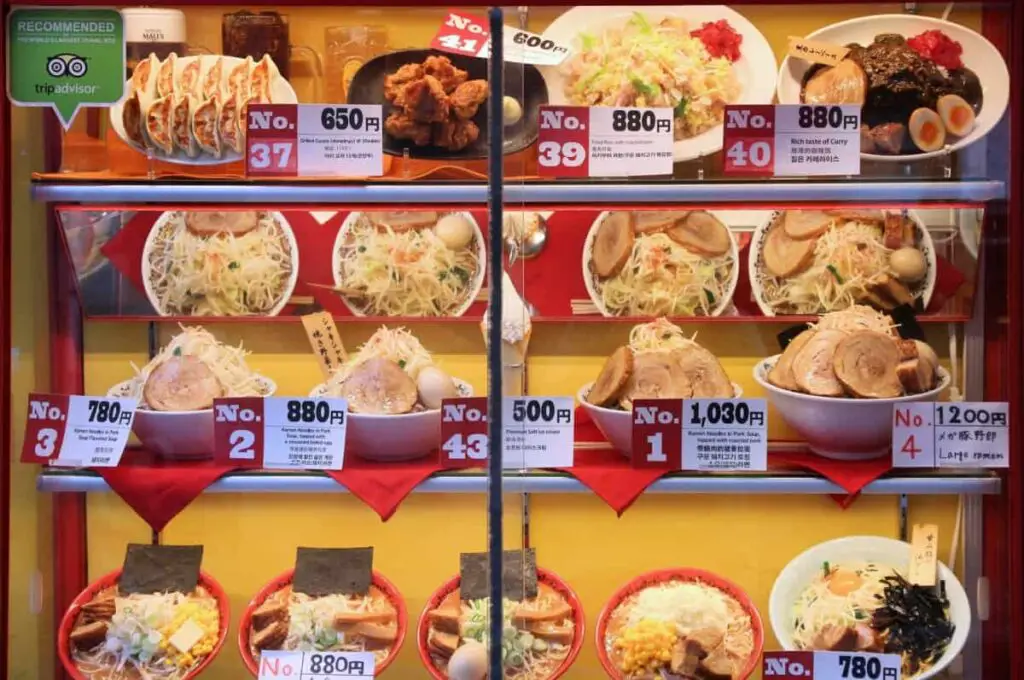
Ramen: Noodles-soup stock-spices and toppings
Ramen noodles vs Udon noodles vs Soba noodles
Ramen noodles are created with four ingredients: wheat flour, salt, water, and kansui, (alkaline mineral water) containing sodium carbonate, potassium carbonate, and a tiny quantity of phosphoric acid. Both ramen and Udon noodles are made from wheat, they are two types of noodles.
The mineral water (kansui) is the distinctive component of ramen noodles. Kansui gives the noodles a yellowish tint as well as a firmer texture.
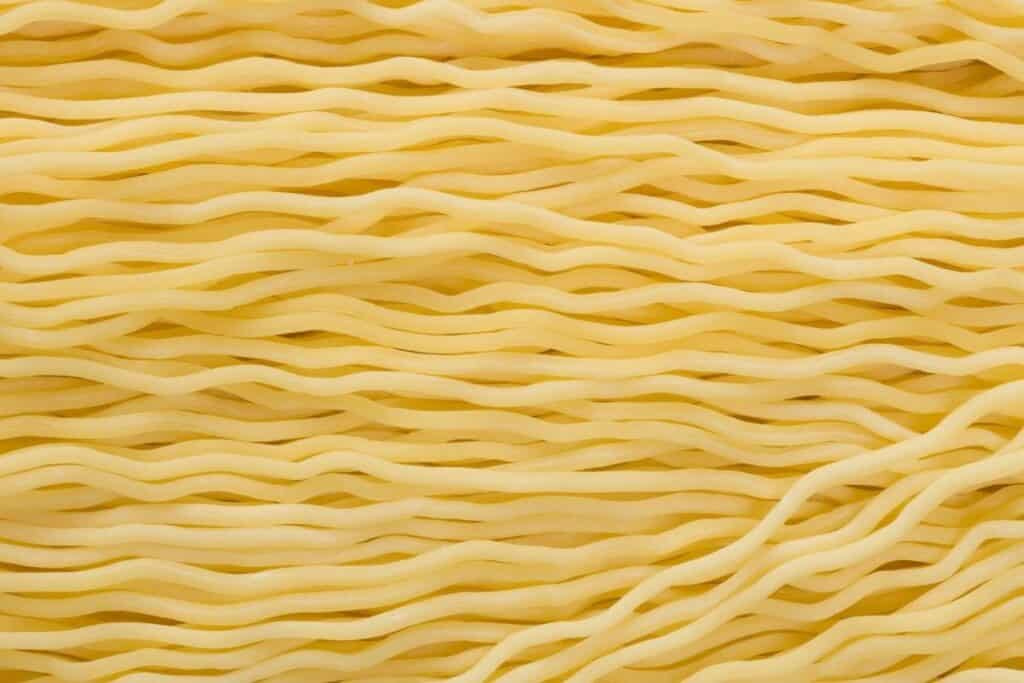
Kansui can also be replaced with eggs. Some noodles are made without eggs or kansui thus you have yakisoba noodles since their structure is weaker and they are more prone to absorbing moisture and are not suitable for ramen.
Japanese noodles compared:
| Ramen Noodles | Soba Noodles | Udon Noodles |
| Wheat flour | Buckwheat flour | Wheat flour |
| Kansui (Alkaline mineral water) | Water | Water |
| Salt | Whole wheat flour (small amount) | Salt |
| Water |
As with most regions, chefs, and restaurants across Japan ingredients vary and change. These are simply the most common ways in which the noodles are made.
On to the soup stock
As a general rule ramen soup base or stock in Japan is often prepared with a chicken or pork stock, as well as pork bones, katsuobushi or tuna fish flakes), niboshi (dried sardines), beef bones, shiitake mushrooms, onions, and kombu (kelp). Vegetable broths can also be used in ramen broths as well.
Adding flavor (5 most common)
Shoyu or Soy Sauce
Soy sauce flavored ramen contains a clear brown broth made with chicken and vegetables, or occasionally fish or beef, and a generous amount of soy sauce, resulting in a tangy, salty, and flavorful soup that is yet light on the tongue.
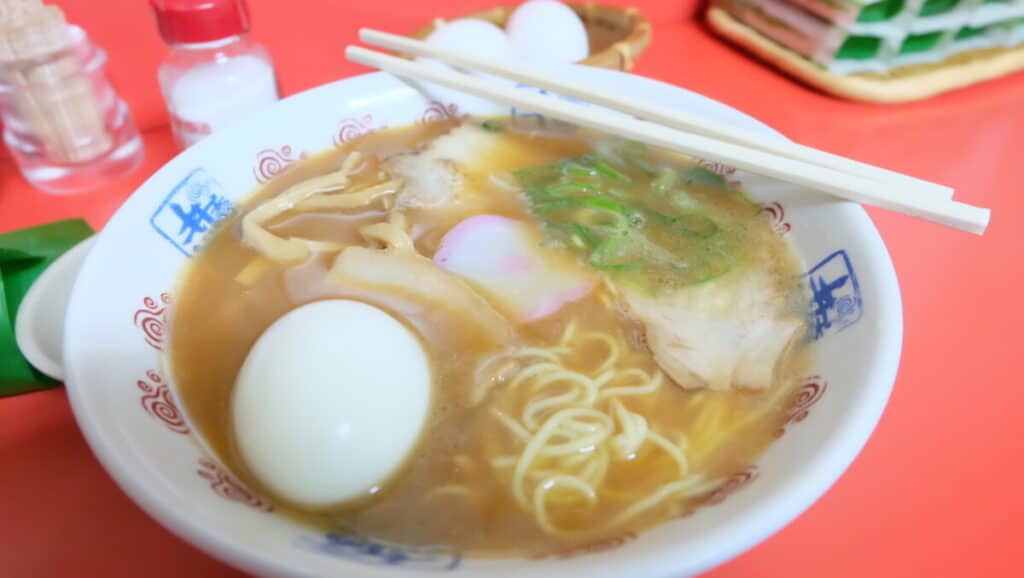
Shio or Salt
Shio or salt flavored ramen is the oldest of ramen types. The broth is light, clear, and yellowish, and it contains a mix of chicken, veggies, fish, and seaweed. Pork bones are occasionally included, although they are not boiled, leaving the soup light and transparent.
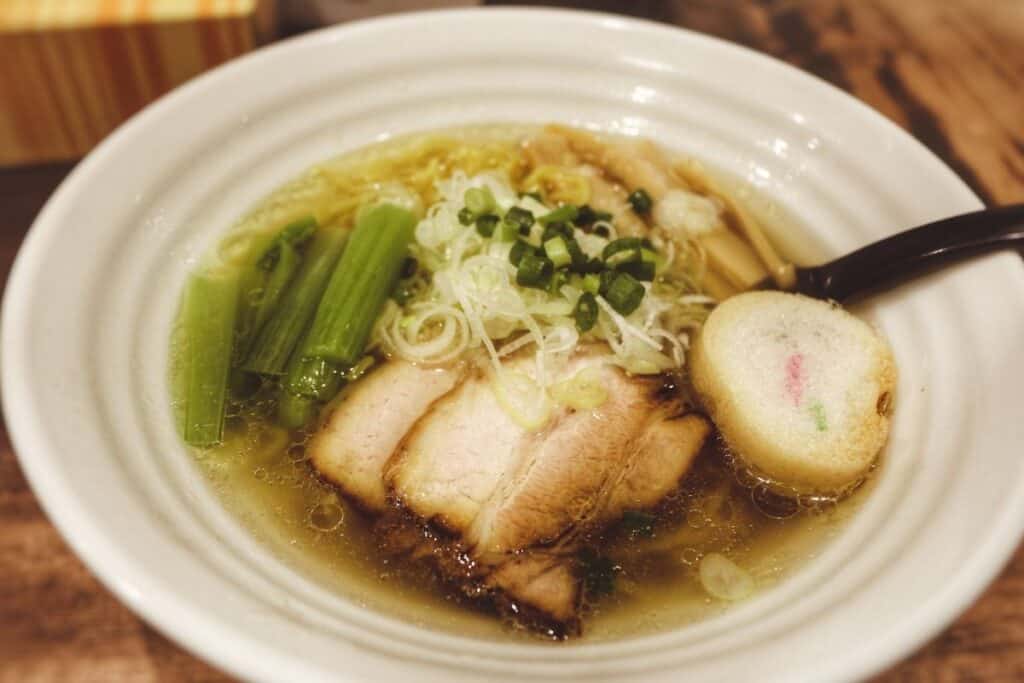
Miso or Soybean Paste
Miso ramen or soy paste ramen is a thick, slightly sweet, hearty Japanese ramen that originated in Sapporo, Hokkaido. Its broth blends miso with fatty chicken or fish broth – and sometimes with tonkotsu or lard to make a thick hearty soup. The flavor of miso ramen soup is strong and acidic.
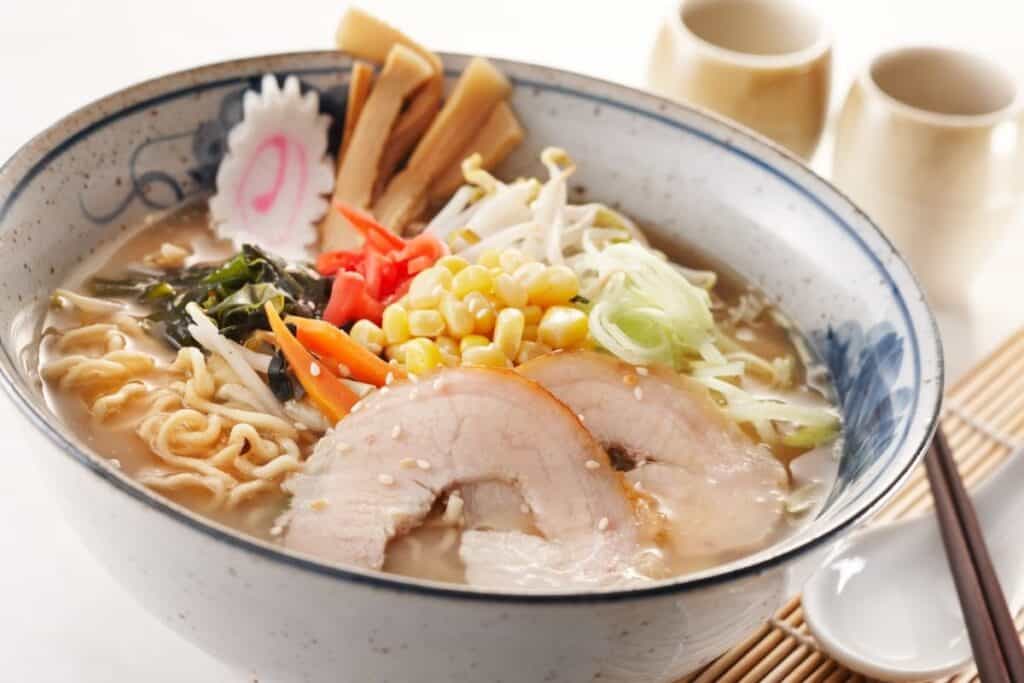
Kare or Curry
Curry, or kare, Ramen is a type of ramen that is prepared with a variety of ingredients Curry soup is prepared mostly from pig bones and vegetables, and it is seasoned using curry.
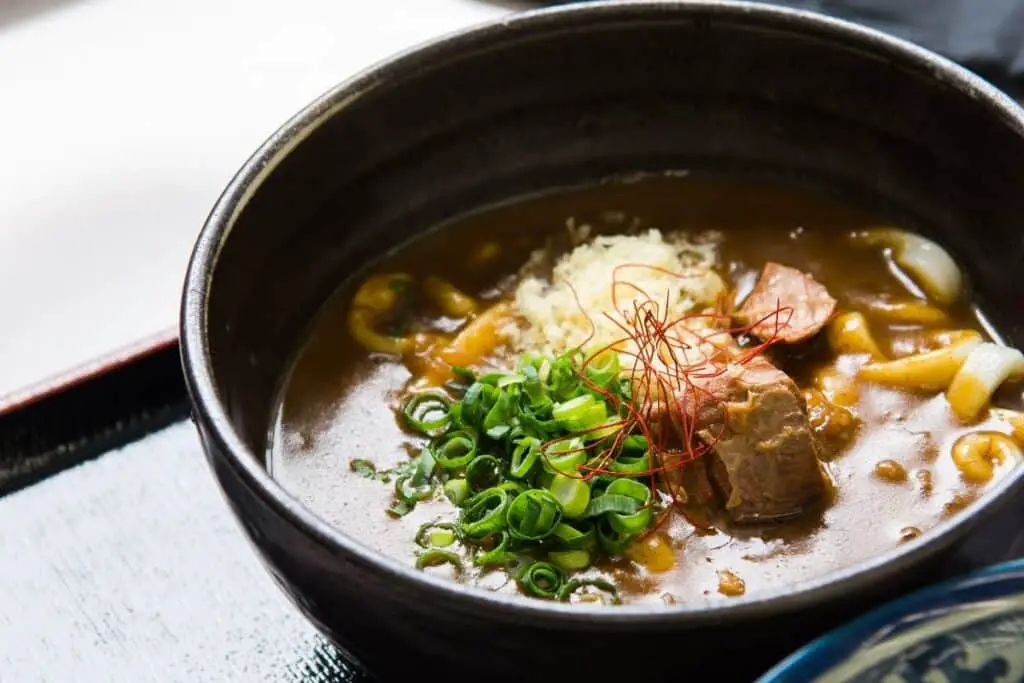
Tonkotsu or Pork Bone
Tonkotsu ramen, also known as pork bone ramen, is made with pig bones that have been cooked until they have dissolved into a murky white broth. Chicken broth and pork fat are frequently used to flavor the rich, creamy soup.
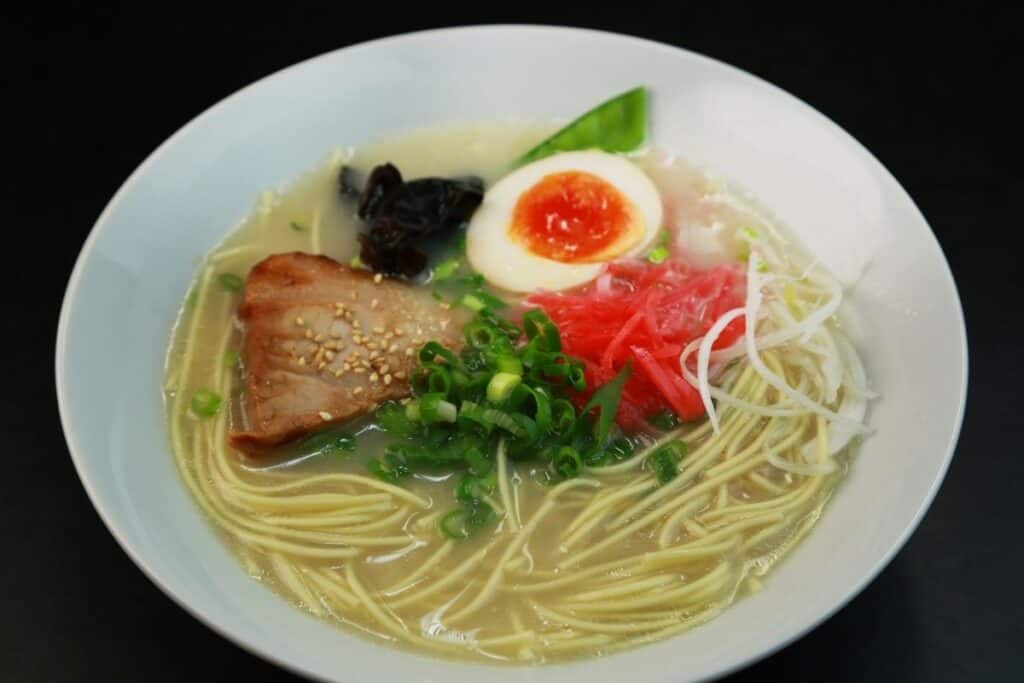
Top It Off
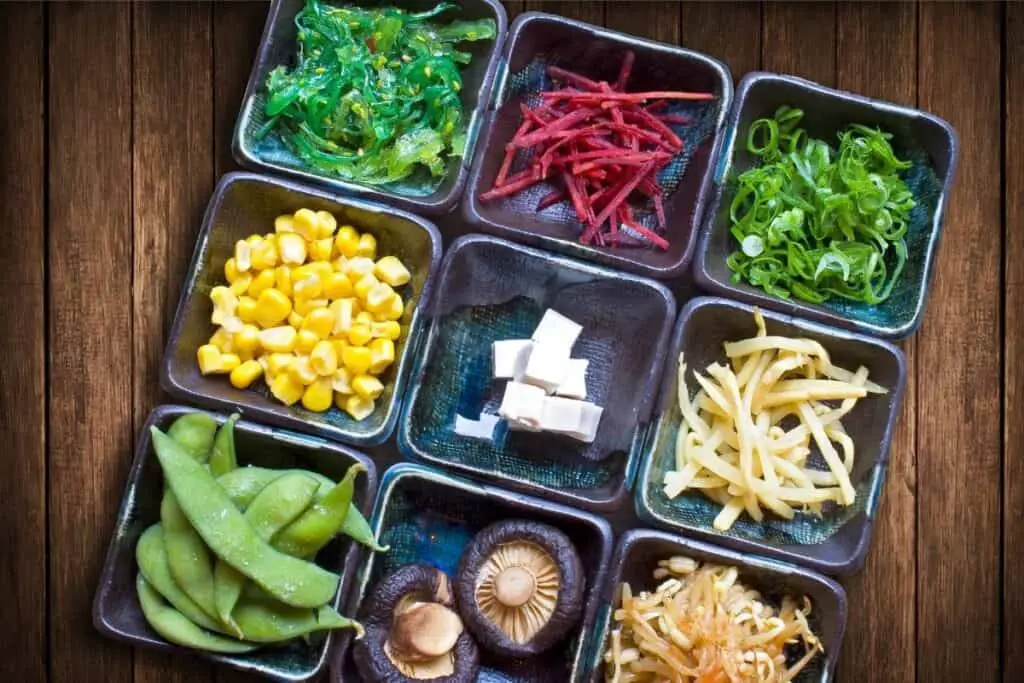
After the noodles and stock are prepared ramen is topped with many variations to add flavor and satisfy each person’s taste. There are over a dozen popular toppings for ramen in Japan.
Chashu
- Chashu (sliced barbecued or braised pork) Chashu is fatty pork that has been marinated and cooked in a sweet soy sauce marinade before being roasted or braised.
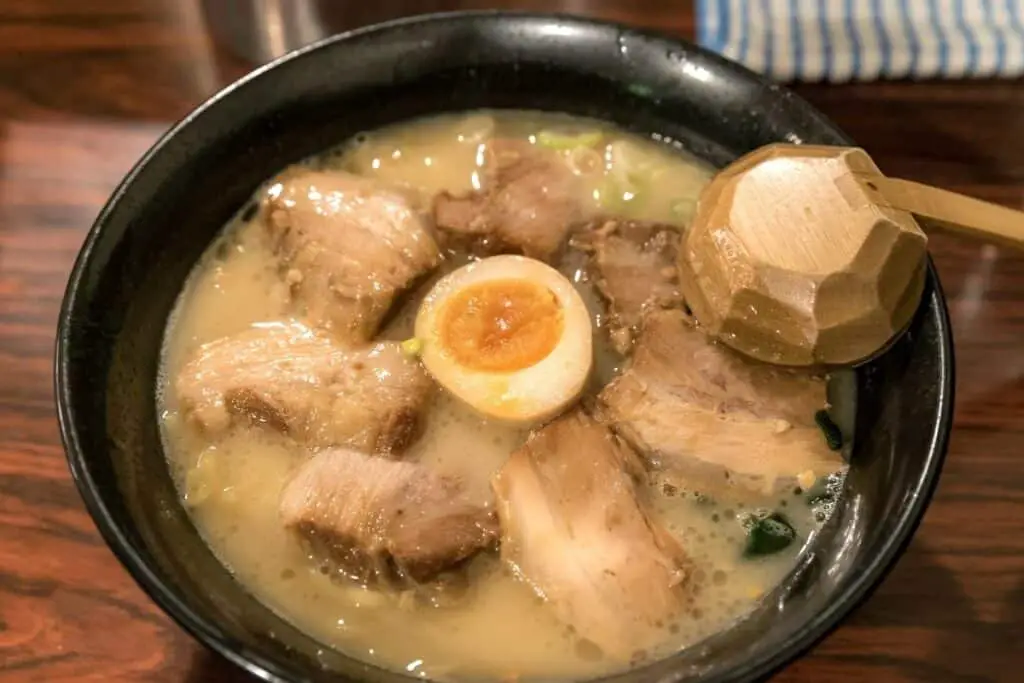
Negi (green onion)
- Negi or green onion Chopped or shredded, sometimes Leeks are used.
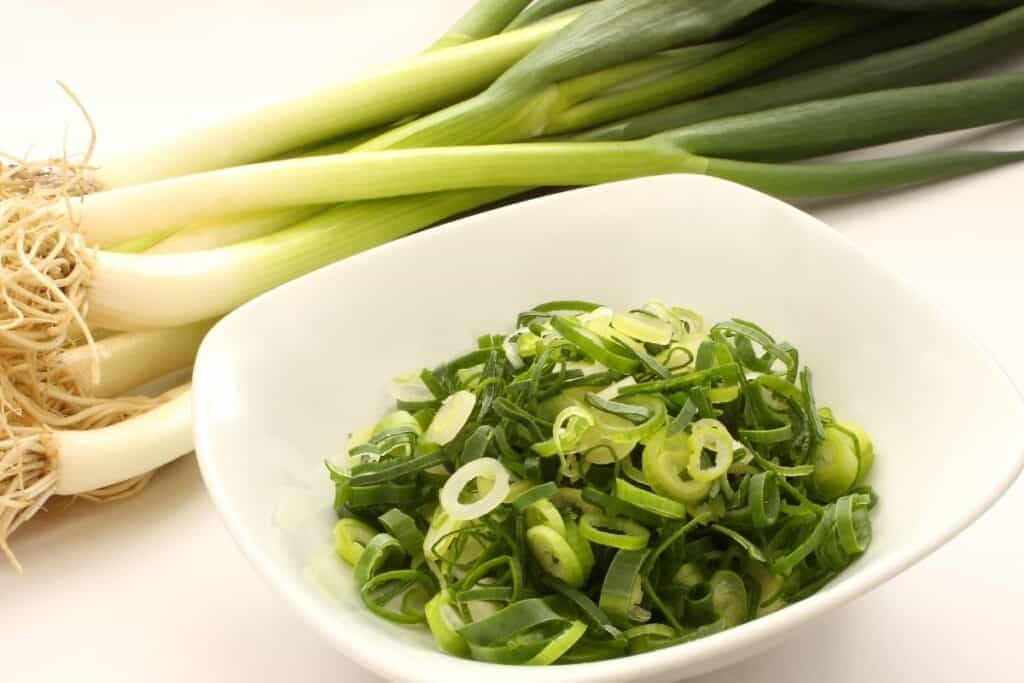
Takana-zuke
- Pickled and seasoned mustard leaves
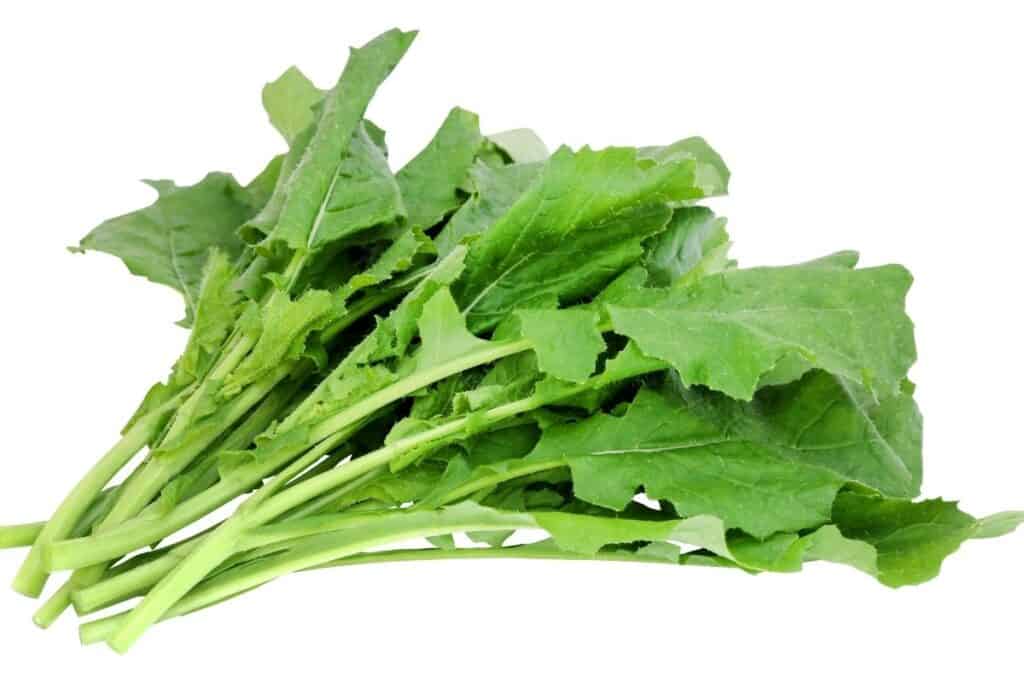
Tamago
- Tamago or egg prepared hard boiled soft or raw. Sometimes marinated with such items as soy sauce.

Moyahsi
- Bean sprouts or Moyashi can be either cooked or raw
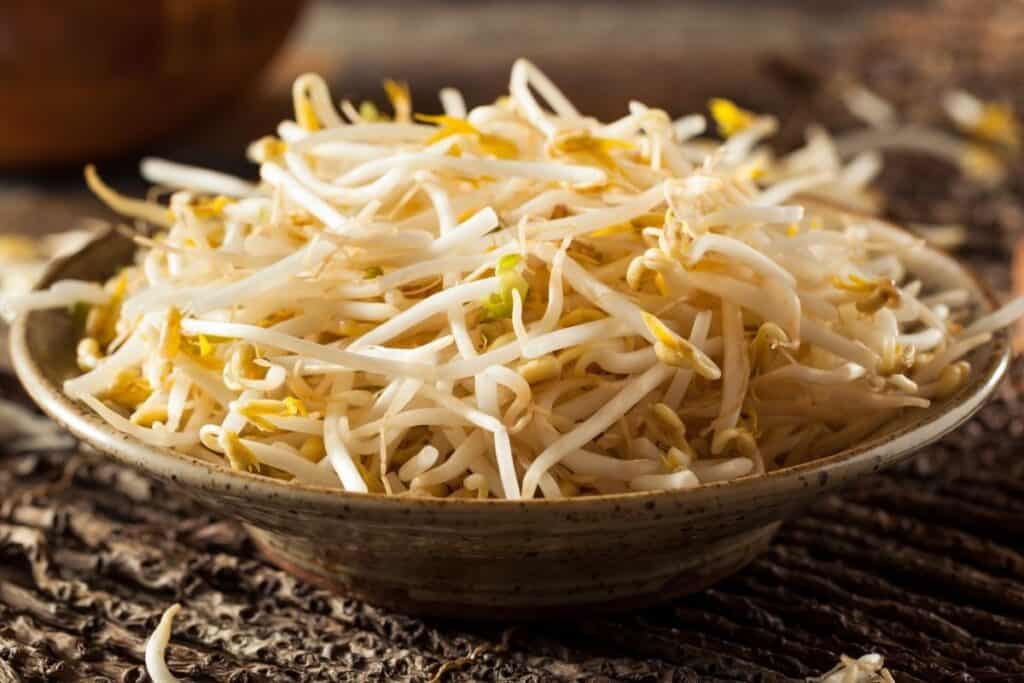
Menma
- Fermented bamboo shoots flavored with salt
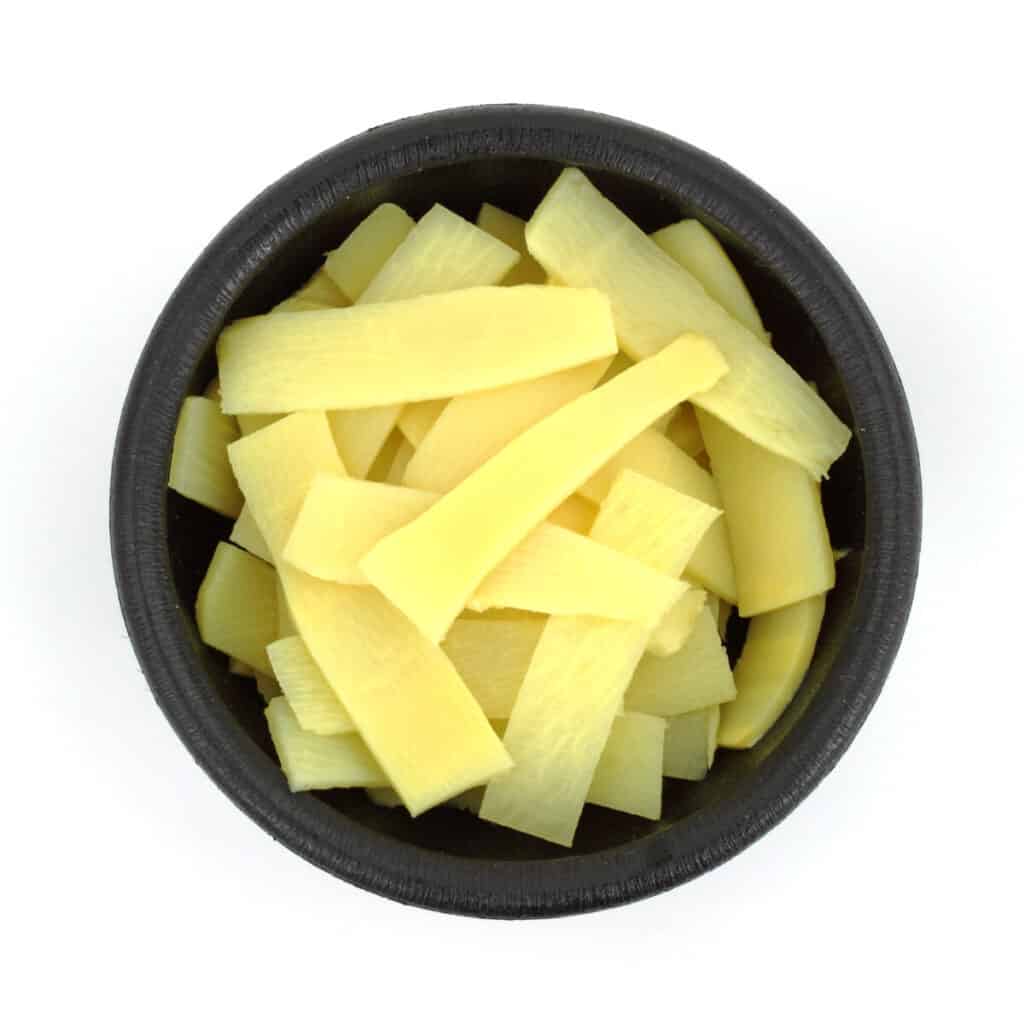
Kakuni
- Braised pork cubes or squares
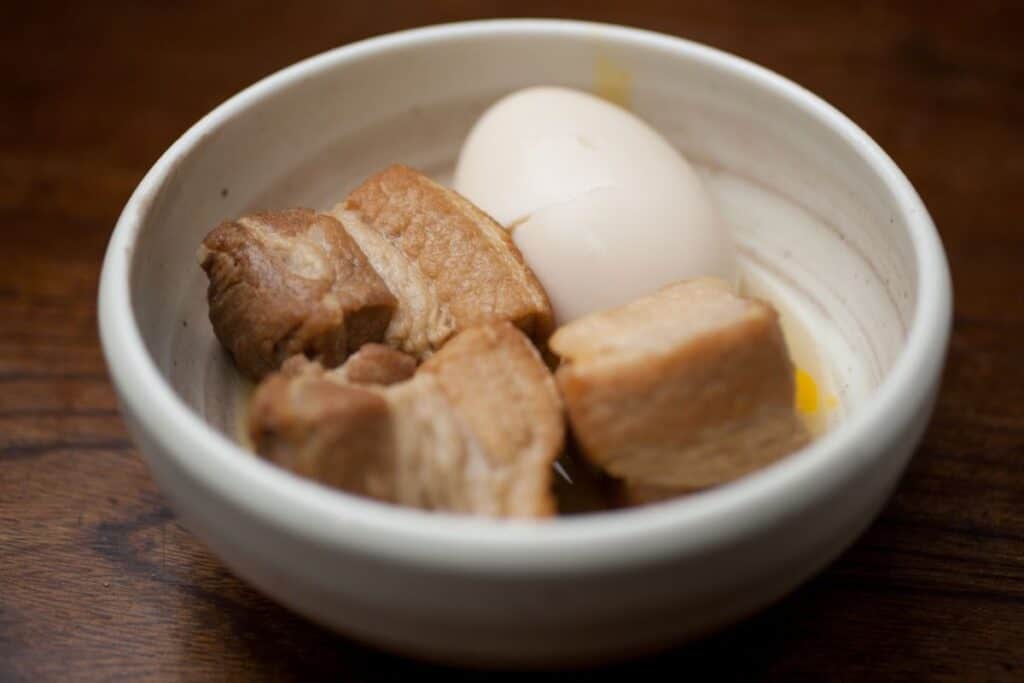
Kikurage
- Mushrooms that are dark and shaped like an animals ear
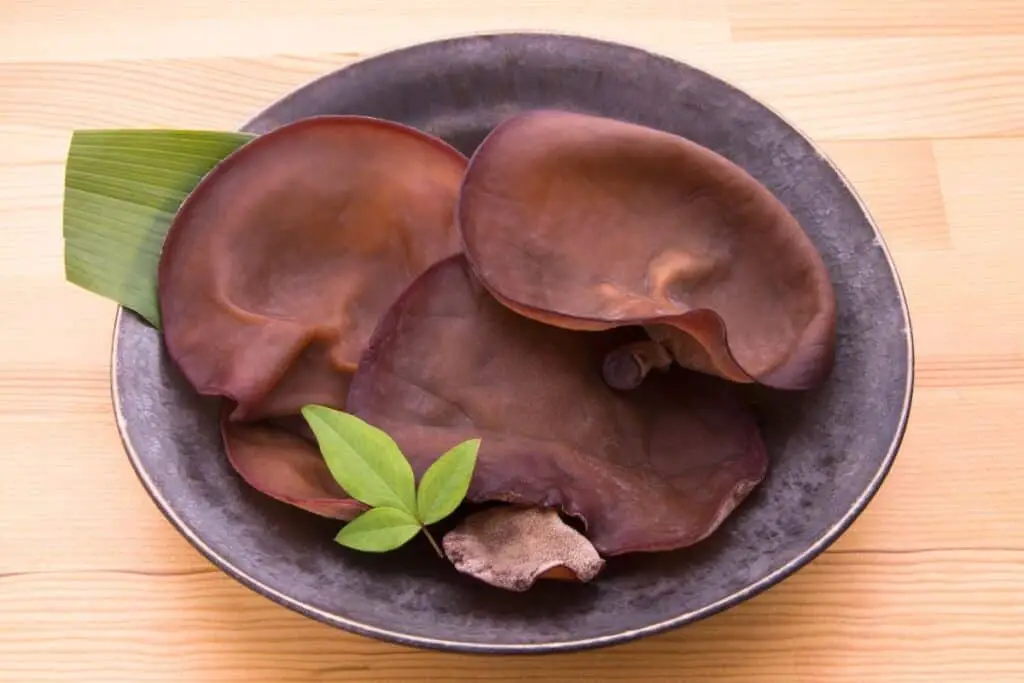
Nori
- Nori is a well known seaweed in Japan used in ramen it adds fiber and nutrients
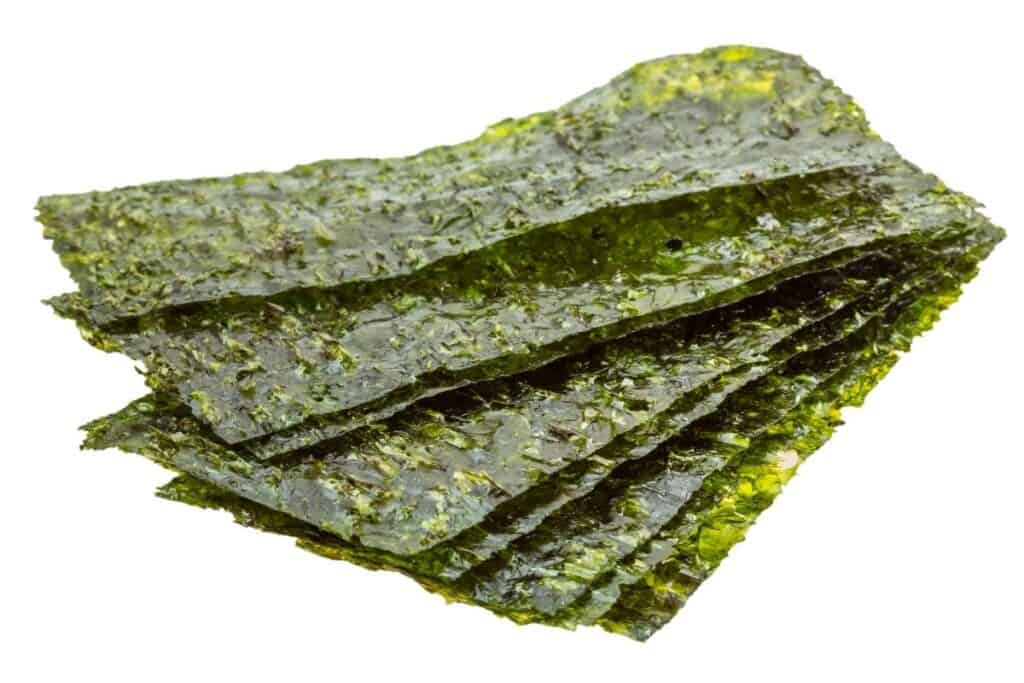
Kamaboko
- Kamaboki is fish paste or cake often in a pink and white spiral called narutomaki
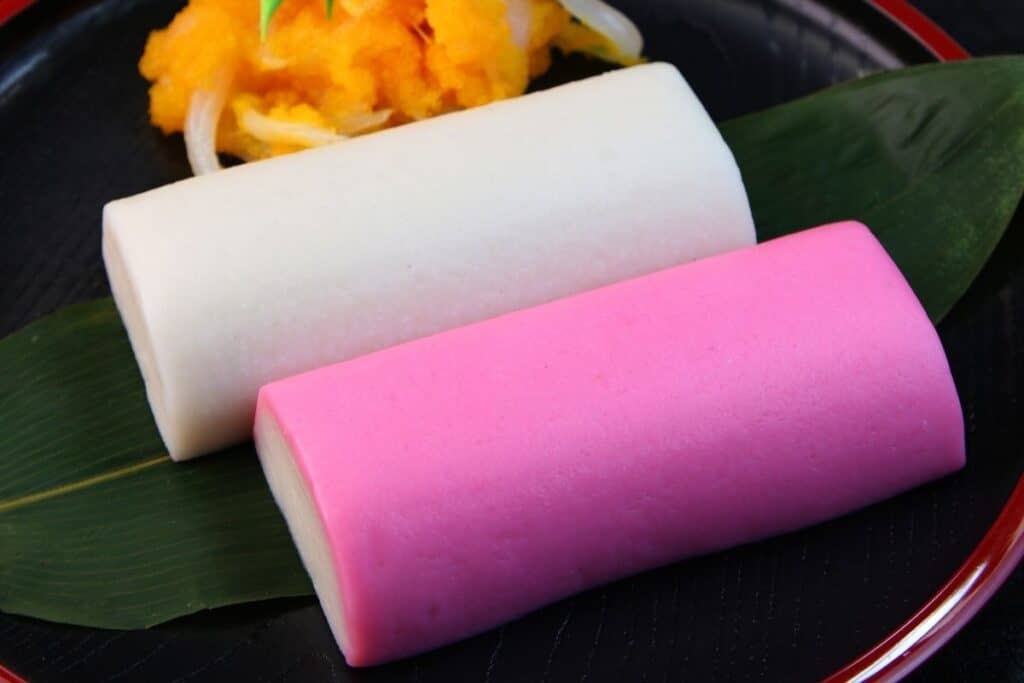
Ika
- Common squid

Umeboshi
- Pickled plum
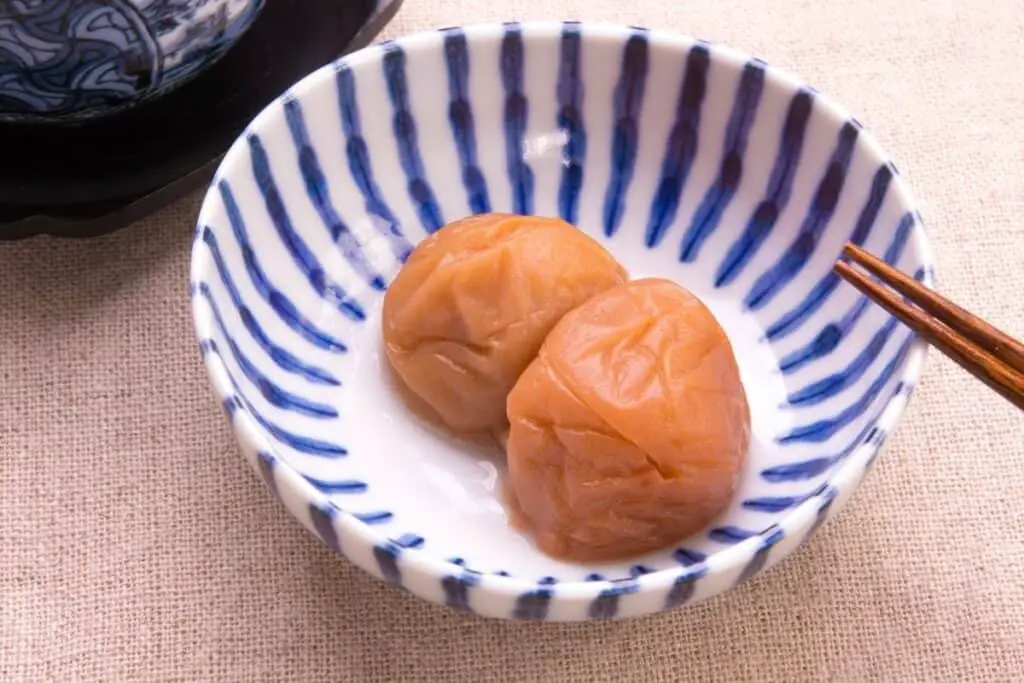
Wakame
- A variety of seaweed
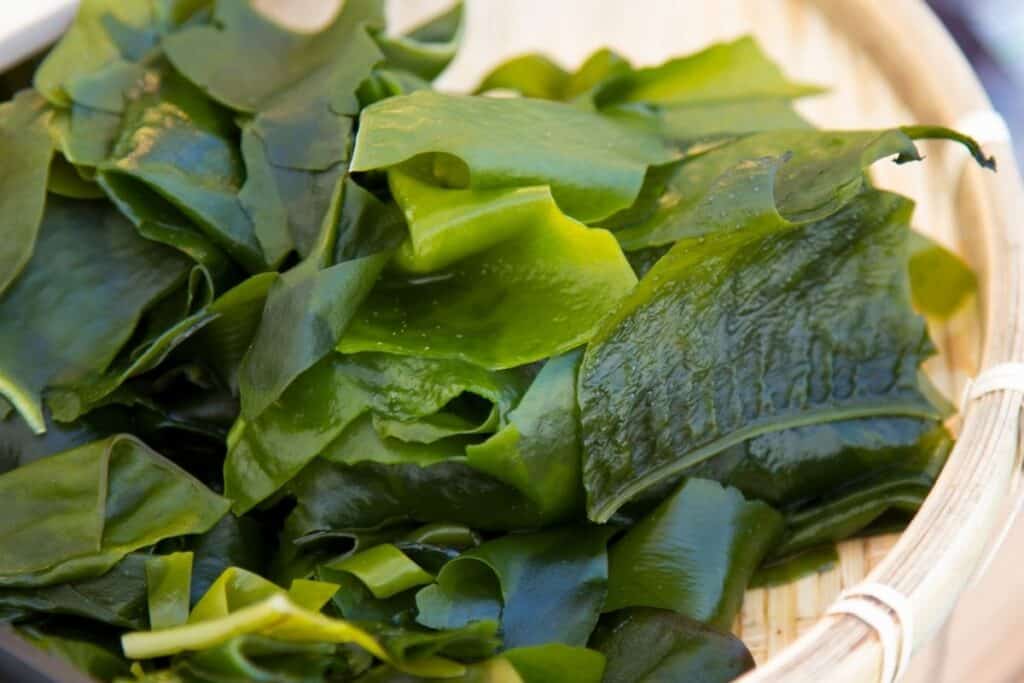
Corn-Butter-Olive oil and Soy sauce
- In addition, various seasonal and regional vegetables may be added as ramen toppings
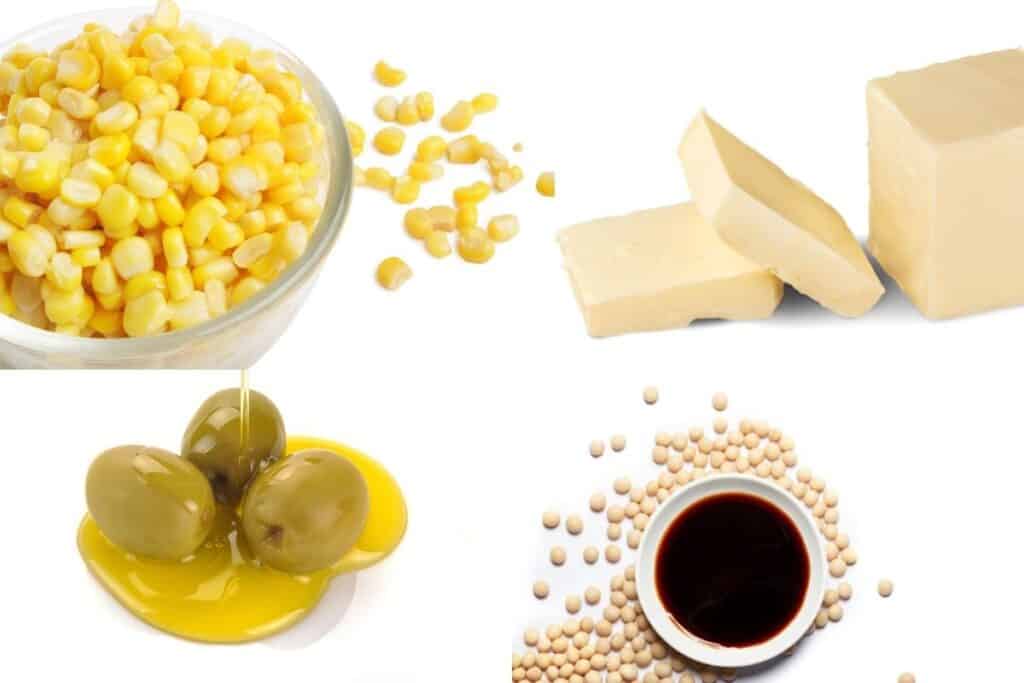
Regional favorites by Prefecture
Hakata Ramen (Fukuoka)
Hakata ramen, is a popular tonkotsu ramen in fukuoka. A super-smooth pork bone broth (tonkotsu) is combined with extra-thin noodles and few toppings to make this basic ramen.
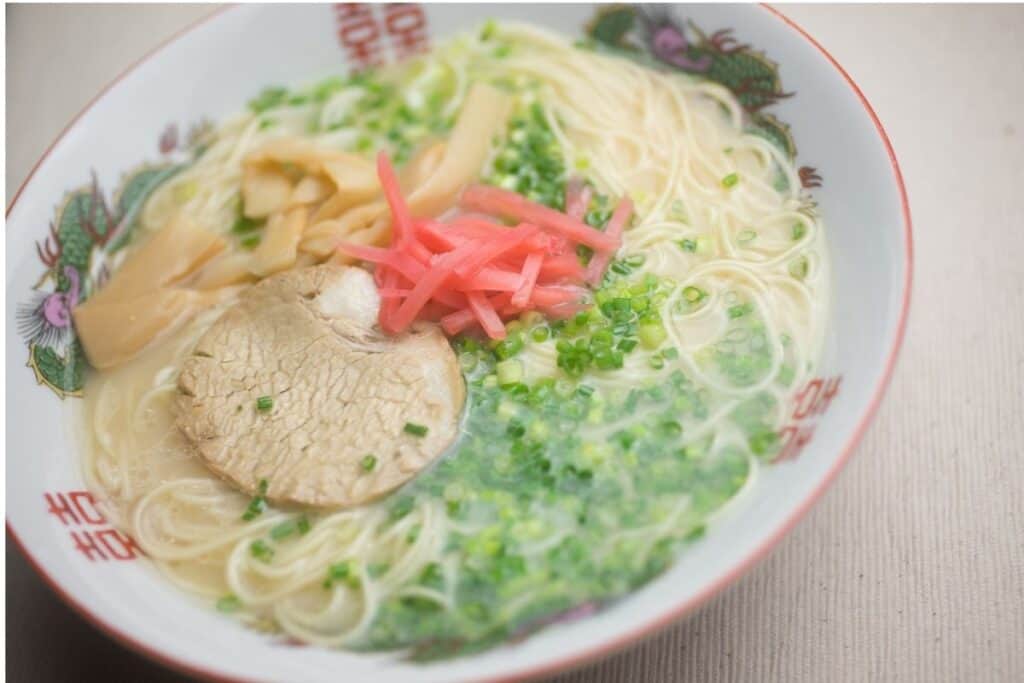
Onomichi Ramen (Hiroshima)
Onomichi is ramen, with a soy sauce-based broth flavored with pork, fish from the Seto Inland Sea, poultry, or dashi on occasion. The soup is served hot with medium-thick flat wheat noodles and a substantial portion of seabura (pork back fat).
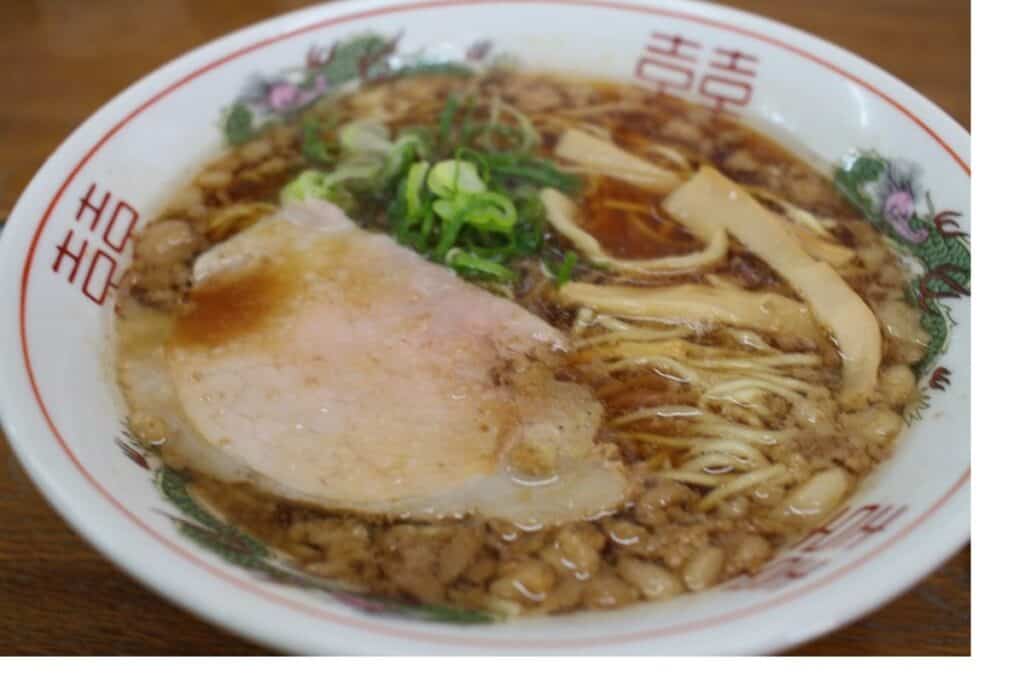
Tokyo style ramen (Tokyo)
Ramen in the Tokyo style is made up of thin noodles served in soy-flavored chicken broth. As historic ramen restaurants in Tokyo generally stem from soba cafes, the Tokyo-style broth often contains a hint of dashi. Chopped scallion, menma, sliced pork, kamaboko, egg, and nori are everyday toppings.
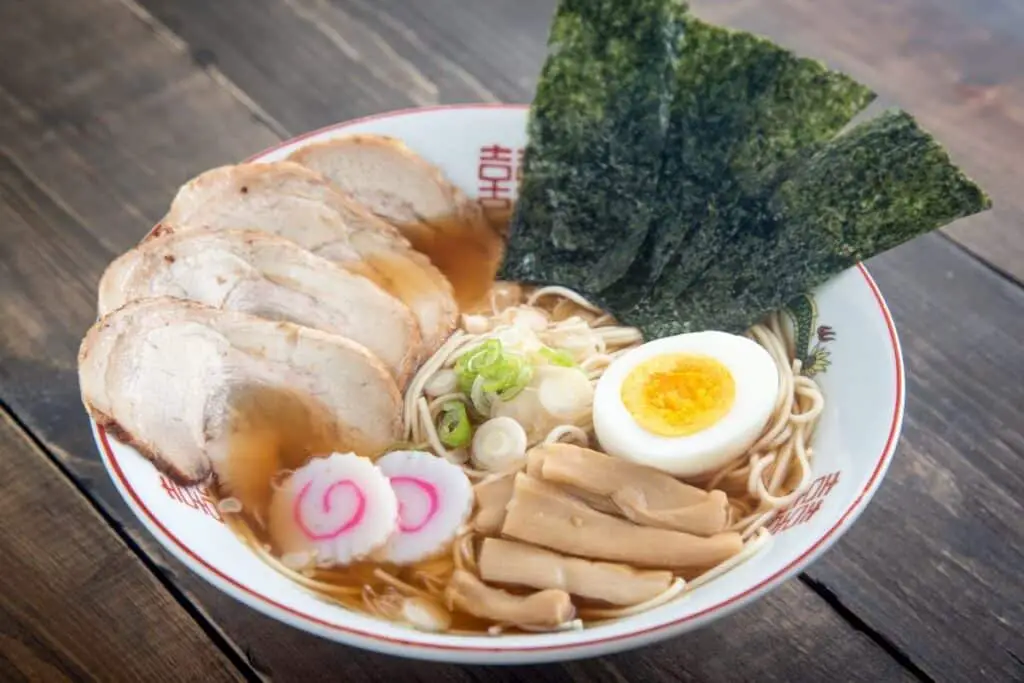
Kitakata Ramen (Fukushima)
Kitakata ramen is generally topped with green onions, fish cake, char siu, and bamboo shoots and has a soy sauce base. The noodles are also significantly thicker than those seen in other types of ramen.
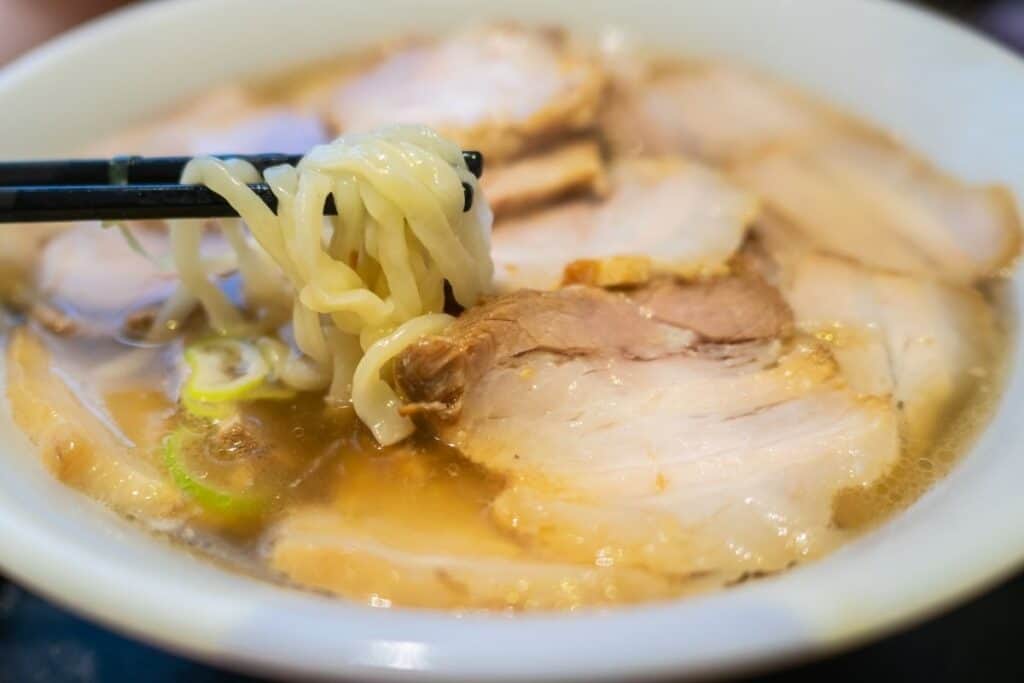
Sapporo Ramen (Hokkaido)
This miso-flavored ramen is made with lots of veggies and miso soup to create healthy ramen
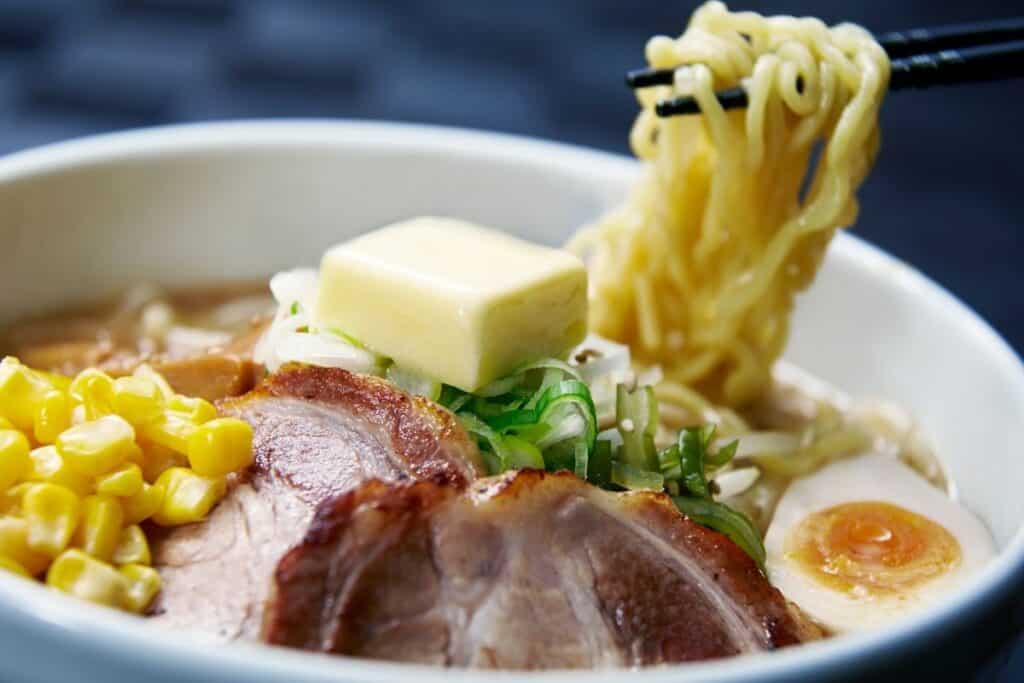
Asahikawa Ramen (Hokkaido)
The broth is generally made with pork, and the toppings include eggs, char siu pork, scallions, and bamboo shoots.
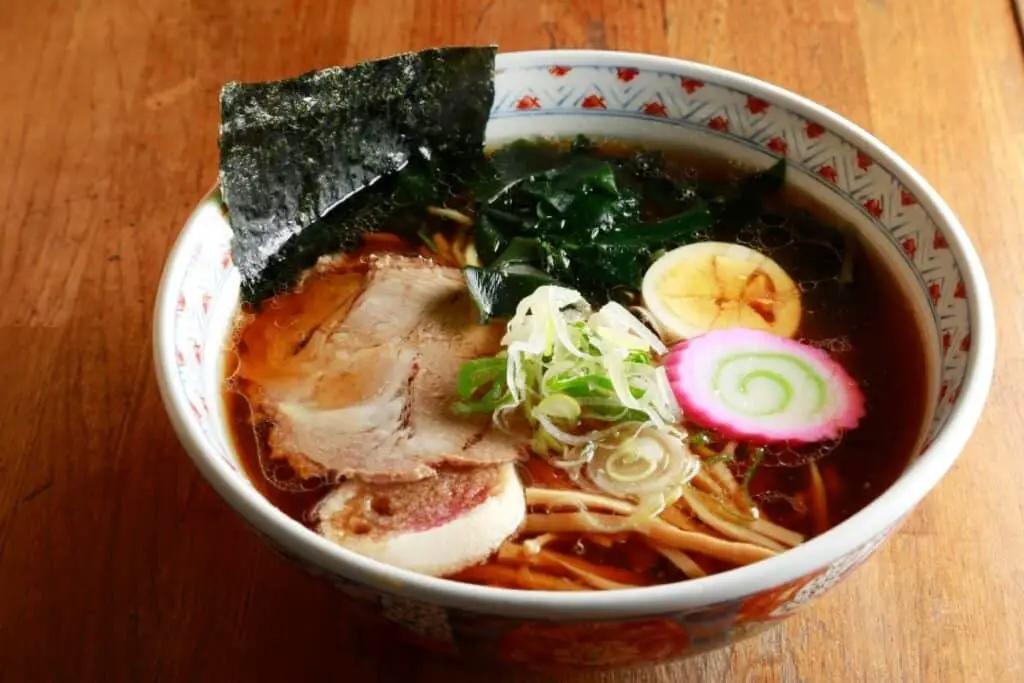
Finding your way to a ramen specialty shop
Ramen shops were and are the original fast-food restaurants. Designed for busy workers needing to get back to their jobs.
Often laid-back and designed for rapid ordering, eating, and moving on. Because many people eat ramen on the move, most ramen restaurants provide plenty of counter space as well as tables for groups. Most people go to ramen shops for the basic ramen, thus menus at ramen shops contain fewer selections than in other restaurants.
Check to see if there is a vending machine at the door before looking for a seat. Many ramen shops require customers to place their exact orders in advance via a vending machine before taking a seat, for the sake of ease and efficiency.
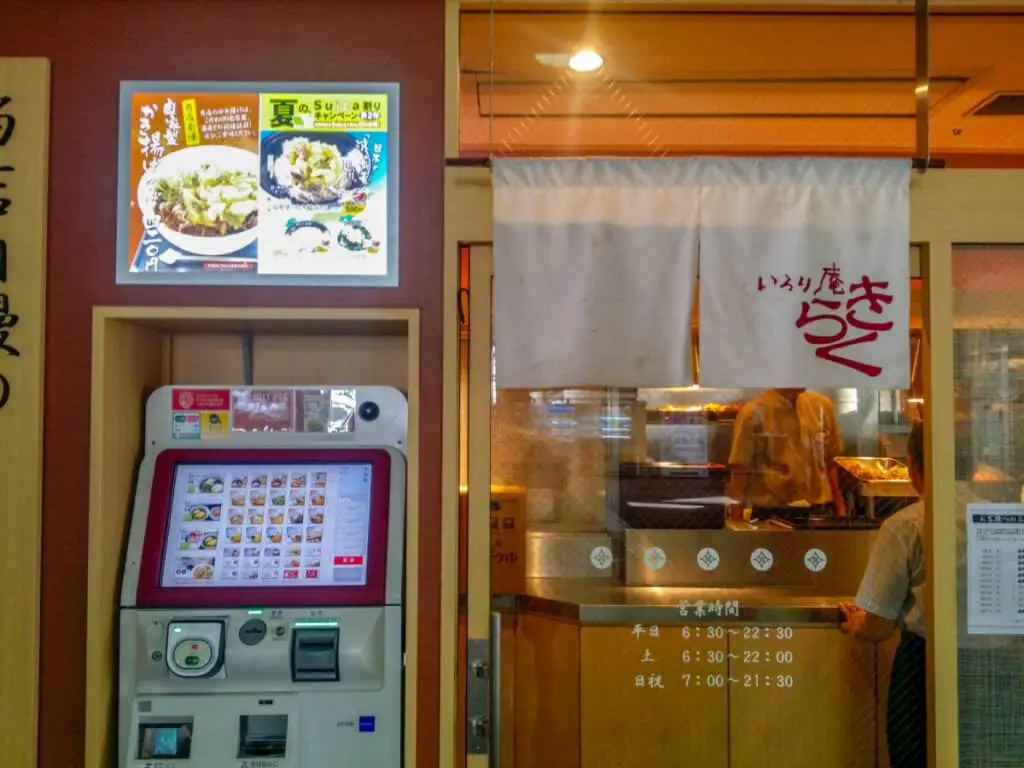
The employee collects the ticket and delivers your food. People may dine at their leisure and depart without having to worry about paying because everything has already been taken care of.
If there isn’t a vending machine, the staff will take your order, deliver it to you, and when you’ve finished eating, you’ll bring the bill to the counter to pay, as in many Japanese restaurants.
Ramen Etiquette
You’ll be given chopsticks and a spoon that looks like a Chinese ladle to eat your ramen with. The soup liquid, as well as toppings like eggs, are eaten with a spoon.
The noodles are eaten with chopsticks, and most Japanese people slurp their noodles loudly. It’s stated that this is done for two reasons. Slurping the noodles cools them as they enter your mouth, preventing burns. And it is claimed that slurping noodles improves the ramen’s taste.
Radical Ramen Lovers
If you a ramen fanatic then you must visit the ramen museum.
Ramen Museum in Shin Yokohama
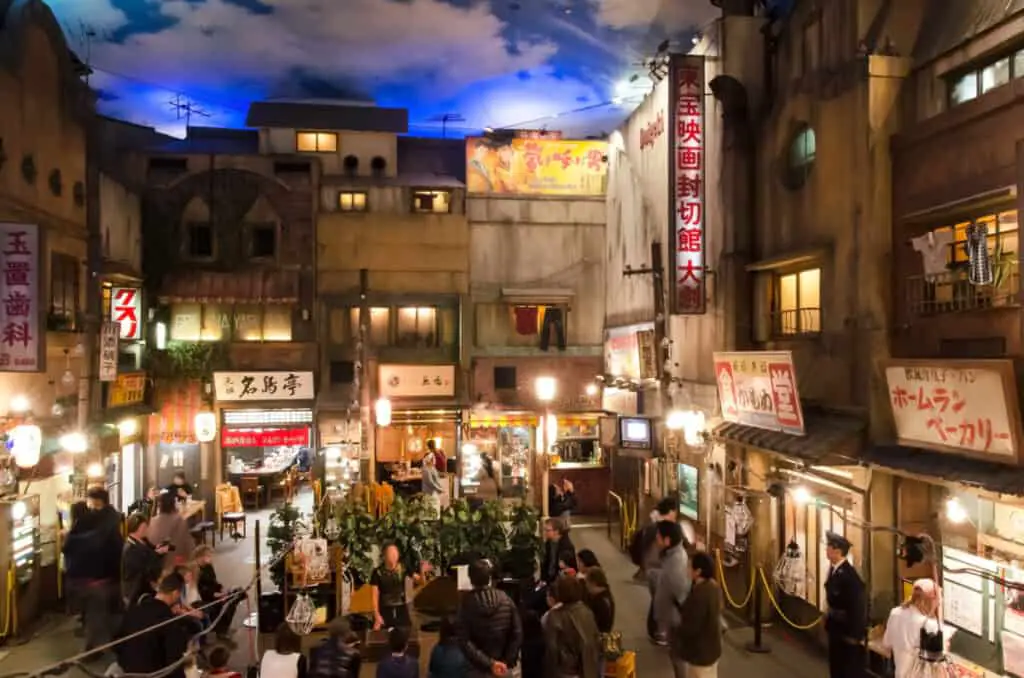
Trip Advisor (Ramen Museum)
The world’s first food-themed amusement park, Shin-Yokohama Ramen Museum, opened in 1994. Their mission has always been to be a place where you can sample the tastes of Japan’s national cuisine from most ramen-style establishments all across Japan without having to leave the greater Tokyo area.
My thoughts on Ramen
Many years ago I thought of ramen as a food of last resort. After visiting Japan and experience what I consider to be real ramen it’s a whole different thought process.
Ramen is an incredible Japanese dish that has endless varieties and flavors. I guess the only thing to do is try them all. It’s a tough job, but I can manage. Besides someone has to do it…Right?
One life, one encounter
japanese proverb

